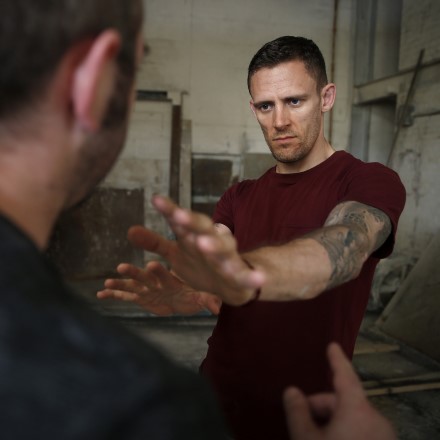Krav Maga Stances & Movement

Stances & Movement Articles
- Movement, Movement, Movement....
- Movement, Movement & More Movement
- Tai Sabaki & Body Defense
- Stances
- Movement
- Range
All Krav Maga Articles
Krav Maga's Use Of Stances & Movement
One of the most contentious questions and issues concerning martial arts, combat sports and fighting systems is regarding an individual’s “Fighting Stance”. Where reality-based self-defense systems differ from martial arts is that the fight doesn’t adhere to any agreed upon conventions so there is no time given for a person to come out from their corner and adopt a particular stance etc. In fact, adopting a fighting stance prior to the commencement of a fight might invalidate a person’s claim to self-defense e.g., they may look to be the aggressor, they may be acknowledging that this is a consensual contest and/or invalidating the claim that they were looking to disengage from a physical confrontation etc. Obviously in a consensual sparring match or sporting event, participants allow each other a moment to prepare for the upcoming contest by adopting a stance that gives them the best chance of being successful etc.
Although a fighting stance does exist in Krav Maga it is not something that is adopted prior to a physical confrontation, but rather something that is assumed during the conflict itself e.g., a person may initially be sucker punched with their hands down, and find themselves as they start to fight back and defend themselves, positioning their body in such a way as to be physically effective etc. The fighting stance then becomes something that they move through, rather than something they statically adopt i.e., a fight should be something that is dynamic rather than static etc.
A good fighting stance should allow a Krav Maga practitioner to move effectively and generate power when striking etc. Its defensive elements should be based upon control of range and movement, rather than by closing off the body so various parts can’t be attacked etc. Trying to defend the groin – as a vulnerable target – at the expense of good movement and effective power generation represents a false economy, as such targets are best defended by putting pressure on an assailant through movement and striking than trying to cover them from attack when staying static etc.
Movement should accomplish one of three things: it should be part of an attack, set up an attack, or prevent an attack. If it is not doing one of these three things, then it is generally being wasted etc. Preferably movement is used offensively rather than defensively, as it is offensive movement that ends fights. Movement can be used to add power to strikes and punches by putting body weight behind punches, such as with the Jab – which traditionally involves stepping forward with the punch etc. There may be times however when it is necessary to move in order to set up an effective punch, kick, or strike and such movement should also be considered as offensive movement(s). This is not to say there isn’t times when movement shouldn’t be purely defensive, as there will be time when taken by surprised or overwhelmed when there are few other options than to simply move away in a defensive manner. However, such movement should be restricted and limited, and the time that it creates used to respond in an offensive and attacking manner.